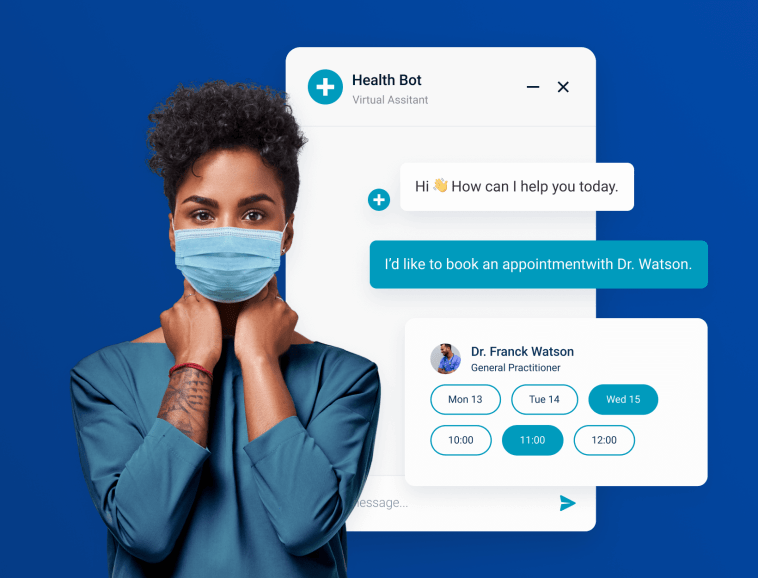Introduction.
Chatbots have emerged as a game-changing technology, enhancing the way we interact with computers and services through natural language conversations.
These intelligent virtual agents have found applications in diverse industries, from customer support and information retrieval to personalized assistance and entertainment.
However, building an effective chatbot model requires a combination of sophisticated natural language processing (NLP) techniques and quality training data.
In this guide, we will delve into the essential steps to train a chatbot model from scratch.
Whether you are a developer seeking to create a custom conversational agent or a business looking to provide exceptional user experiences, this process will empower you to tailor the chatbot to your specific needs.
Training a chatbot model involves a series of fundamental stages, including data collection, data pre-processing, model selection, fine-tuning, and evaluation.
How Do I Train a Chatbot Model?
Chatbots, powered by artificial intelligence (AI), have revolutionized the way businesses interact with customers and users.
These virtual conversational agents offer efficient and scalable solutions for customer support, information retrieval, and personalized assistance.
However, the key to a successful chatbot lies in its ability to understand and respond to user queries accurately.
This is where training a chatbot model comes into play, enabling the chatbot to learn from data and improve its conversational capabilities.
In this article, we will walk you through the process of training a chatbot model, equipping you with the knowledge and tools to create a powerful and effective conversational agent.
1. Define the Chatbot’s Objectives.
The first step in training a chatbot model is to define its objectives. Determine the specific tasks the chatbot needs to handle, the target audience it will interact with, and the domain in which it will operate.
Having a clear understanding of the chatbot’s purpose will help you gather relevant data and design the model accordingly.
2. Data Collection.
Training a chatbot model requires a substantial amount of data. Gather conversational data, chat logs, or user interactions relevant to the chatbot’s objectives.
Depending on the complexity of the tasks, you may need a diverse range of data to ensure the model can handle various scenarios effectively.
3. Data Preprocessing.
Raw data often contain noise and irrelevant information that can negatively impact the model’s performance.
Data preprocessing involves cleaning the data, tokenizing sentences, removing punctuation, and converting text to lowercase.
Additionally, consider using techniques like stemming or lemmatization to normalize words and reduce vocabulary size.
4. Selecting an NLP Framework.
Choose a suitable NLP framework to build and train your chatbot model. Popular frameworks like TensorFlow, PyTorch, and Hugging Face’s Transformers provide pre-built models and tools for natural language processing tasks. Select the one that aligns with your project’s requirements and your familiarity with the framework.
5. Building the Chatbot Model.
Select an appropriate model architecture for your chatbot. Transformer-based models, such as GPT-3, BERT, or LSTM-based models, have shown remarkable success in NLP tasks.
You can use a pre-trained model and fine-tune it on your data or train a model from scratch if you have a significant amount of data.
6. Fine-Tuning the Model.
Fine-tuning is a critical step in the training process. If you are using a pre-trained model, adapt it to your specific domain or tasks by fine-tuning it on your data.
This allows the model to leverage its general language understanding and adapt it to your specific use case, making it more accurate and context-aware.
7. Evaluation and Iteration.
Regularly evaluate the performance of your chatbot model using appropriate metrics such as perplexity, accuracy, or F1 score.
Collect feedback from users and iterate on the training process to continuously improve the chatbot’s performance.
8. Handling Domain-Specific Language.
If your chatbot operates in a specialized domain with unique jargon or terminology, ensure that your training data includes domain-specific language.
This will enable the chatbot to provide more relevant and accurate responses within its specific domain.
9. Deployment and Monitoring.
Once your chatbot model has been trained and evaluated, deploy it into production. Monitor its performance in real-world scenarios and be prepared to make further adjustments based on user feedback and usage patterns.
Conclusion.
Training a chatbot model is a complex yet rewarding process that empowers you to create a virtual conversational agent tailored to your specific needs.
By following the steps outlined in this article, you can build a chatbot that understands user intent, provides contextually relevant responses, and continuously improves over time.
As AI and NLP technologies advance, the possibilities for chatbot applications are limitless, making human-computer interactions more natural and efficient than ever before.
So, roll up your sleeves, embrace the power of training, and embark on the journey of creating your very own intelligent chatbot model.






GIPHY App Key not set. Please check settings